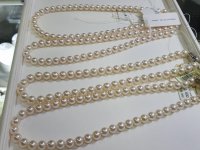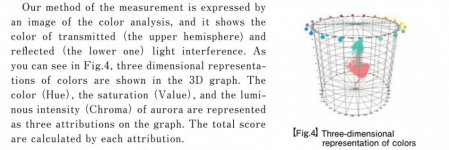CrazyMissy
New Member
Hello pearl people!
I am at the jewelry fair here in Singapore, and I came across a beautiful 8.5-9mm akoya necklace. The shop guy said that this is a Tenjou grade (for those who know Japanese, the sign on the PSL certificate has the characters "heaven" and "lady" on it). And he said that this was higher than a Hanadama.
Has anyone encountered this? Is this grade for real?
I am at the jewelry fair here in Singapore, and I came across a beautiful 8.5-9mm akoya necklace. The shop guy said that this is a Tenjou grade (for those who know Japanese, the sign on the PSL certificate has the characters "heaven" and "lady" on it). And he said that this was higher than a Hanadama.
Has anyone encountered this? Is this grade for real?


